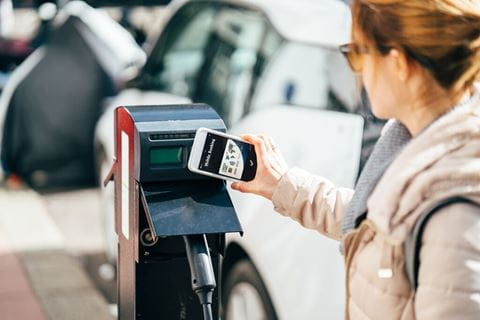.jpg?iar=0&rev=817dc32e8771430e868a9994d20f07e3&mw=480&io=transform%3Afill%2Cwidth%3A480)
Benefits of switching to an electric vehicle
Choose an electric vehicle for a superior driving experience in a cleaner environment at lower costs.
More and more people are now willing to switch to an electric car. Not out of obligation, but out of awareness. The practical and economic benefits are the main reasons for the success of electric vehicles, making electric mobility an increasingly more common reality that we cannot hide.
This transformation is also accelerating among companies, whether due to sustainability policies, or because employees themselves are looking for more sustainable solutions.
Choosing electric mobility has never been so easy. There are more electric vehicle models available on the market every day, which facilitates the transition.

Better for you and the planet
All over the world, electric cars are becoming the most in-demand vehicles. They provide environmental benefits throughout their entire lifecycle and provide plenty of advantages for you as the driver. If you’re thinking of making the switch to electric, here are a few more reasons why you should go for it.

Sustainability
Electric cars contribute to better air quality because they have lower CO2 emissions than petrol or diesel cars. Many countries are already working towards stricter emissions regulations to meet the EU's climate neutrality goal by 2050. Switching to an electric car now means that you are ahead of the curve. Even if only non-renewable electricity is used to charge an electric car during its entire life cycle, it remains more sustainable than a comparable car with a combustion engine in all cases.

Modern technology
The latest generation of electric cars has a realistic range of up to 500 km on a charge, and more charging stations are being added. With electricity currently being the cheapest fuel, charging an electric car costs less than filling a petrol or diesel tank. Also, electric motors require less maintenance: another money- and time-saving benefit. The power of the engine is usually greater than with a comparable car with a combustion engine, and that power is also immediately available in full, which ensures dynamic driving pleasure.

More EVs available each year
Fully electric cars are becoming more accessible and affordable, thanks to the rapidly developing innovations at companies such as Tesla, but also established car brands such as Audi, BMW, Mercedes, Volkswagen, and Nissan. Charging infrastructure and technology is also continuously developing and improving, and the charging network in North America, Europe, and China, in particular, has grown exponentially in recent years. With the falling costs, a deluge of new brands and models, and disappearing range anxiety with the construction of each new charging point, it has never been easier or more attractive to drive electric.

Upcoming legislation changes
To accelerate the EV revolution, new legislation around electric vehicles were introduced. In June 2022, a European Parliament vote mandated that all new cars and vans sold in the European Union should be zero-emission vehicles by 2035. Manufacturers will no longer be allowed to sell new cars or LCVs with internal combustion engines. In 2030, the EU will aim to have at least 30 million electric vehicles on the roads. More and more cities are implementing low-emission zones (LEZs), as they look to improve air quality for residents. More than 200 cities now have some version of an LEZ policy, and this number will only continue to rise.

Benefits for fleets
Since EVs don’t produce any direct emissions, companies can make considerable progress towards their sustainability goals by shifting to an EV fleet. And with more EVs hitting the market each year, the costs to run them is decreasing. What’s more, maintenance costs for EVs are considerably lower. And, also important to mention, to meet the growing number of EVs on the road the EV charging infrastructure is growing rapidly.
Low/zero emission zones
Always access low emission zones
The big attraction of an EV is the fact you are doing mile after mile of emissions-free driving. When you're on the move, the EV system is a 'closed loop', meaning that the battery drives the electric motor and powers all of the onboard electrics but doesn't produce any waste material.
And that’s great news for EV drivers. Why? Because you can still access low emission zones. Many cities keep cars with internal combustion engines away from their centers because of the harmful air pollution they cause. More than 200 cities, including London, Amsterdam, Stuttgart, and Stockholm, have already introduced low-emission zones. The most polluting cars with combustion engines are also banned in Brussels, Antwerp, and Ghent. With electric cars, you continue to have access to low-emission zones.

